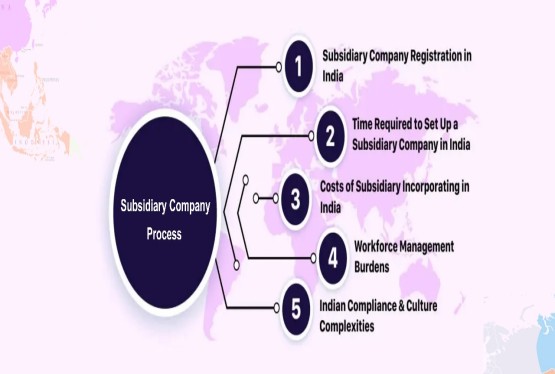Debt Funding:
Debt funding refers to the practice of borrowing money from lenders to finance a business or a business project. The borrower is responsible for paying back the principal amount borrowed, plus interest, over a specified period of time. This type of funding differs from mode of equity funding, in which investors provide capital in exchange for ownership in the company.
For start-ups: Debt funding is a common financing option for startups looking to raise capital. It involves borrowing money from investors, such as banks, peer-to-peer lending platforms, or other financial institutions. Startups typically use debt funding to finance their operations, cover their expenses, or invest in growth. Unlike equity funding, where investors receive a share of the company in exchange for their investment, debt funding requires the startup to repay the loan amount along with interest over a specified period of time.
Debt funding is a lower-risk option for startups as it does not dilute their ownership or control of the company. However, startups should carefully consider their ability to repay the loan and ensure that debt does not hinder their long-term growth prospects.
Debt funding can be short term or long-term debt funding:
Short-term debt funding refers to the borrowing of funds for a period of less than one year. These types of debt are typically used to meet working capital needs or to fund seasonal fluctuations in cash flow.
Example of Short-term funding:
-
Business line of credit: A line of credit is a flexible, short-term financing option that provides a business with access to a certain amount of funding as needed.
-
Invoice financing: Invoice financing allows a business to borrow money against its outstanding invoices, giving it access to short-term funding.
-
Merchant cash advance: A merchant cash advance is a short-term loan that is based on a business's future credit card sales.
Another example, on ‘Shark Tank’ India show, the sharks invest their own money in exchange for the right to a portion of equity share of the Company, which allows them to profit from the stock deals. When a shark invests equity in a business, they often work out a deal that specifies a certain percentage of the ownership in return for a certain sum of money in consideration. This percentage is typically dependent on the Company's valuation currently on next year, which is established by the Sharks based on their own research and analysis.
Long-term debt funding, on the other hand, refers to the borrowing of funds for a period of more than one year or multi years carrying low rate of interest as they incur huge interest obligation.These types of debt are typically used to finance capital expenditures, such as the construction of new facilities or the purchase of long-lived assets.
Example of Long-term funding:
-
Term loan: A term loan is a lump sum of money that is borrowed for a specific period of time, usually from one to five years.
-
Equipment financing: Equipment financing is a type of long-term financing that allows a business to purchase new equipment or machinery by borrowing money over a period of several years.
-
Bond issue: A bond issue is a type of long-term financing that involves issuing debt securities, such as bonds, to investors. In exchange for lending money, investors receive periodic interest payments and the principal amount when the bond matures.
Another example, on Shark Tank, India show, where STAGE venture secured INR 3 crore in debt and equity at a valuation of Rs 250 crore from Lenskart CEO Peyush Bansal, Gupta and Emcure Pharmaceuticals Executive Director Namita Thapar. The startup has also raised funds from Blume Ventures, Better Capital and other marquee investors.
There are several ways the Sharks profit from their equity deals:
-
Dividends: Businesses that make money may decide to pay their shareholders dividends. Sharks would get dividends according on how much of the business they owned.
-
IPO: The company grows large and eventually is traded at a recognised stock exchange, let say, they already own 20% or certain % of the company and can decide to sell little chunks off it if they wanted.
-
Capital appreciation: The value of the Sharks' stock stake in the firm will rise as the company's worth rises over time.
-
Exit: The Sharks can recoup their investment costs if the company is sold or goes public.
-
Royalty: Some sharks might accept a royalty arrangement whereby the business gives them a portion of its earnings in return for their investment.
There are various types of debt funding, including:
-
Term Loans: A loan with a fixed repayment schedule and a specific maturity date from the bank. Term loans are typically used for larger expenses such as purchasing equipment or property. It can be secured or unsecured in nature.
-
Lines of Credit: A type of loan that provides a company with access to a certain amount of credit, which can be drawn upon as needed. Lines of credit are often used for short-term financing needs.
-
Bonds: A type of debt security and financial instrument which is sold to investors in exchange for regular interest payments and repayment of the bond's face value at maturity.
-
Commercial Paper: A type of short-term debt that is issued by companies to meet their short-term funding needs. Commercial paper typically has a maturity of less than one year.
-
Debentures: A form of debt finance where a company borrows funds from investors and promises to repay the amount borrowed along with interest. Debentures are typically unsecured, meaning they are not backed by specific assets, and the company's ability to repay the debt is based on its overall financial strength. Investors in debentures receive a fixed rate of return in the form of interest payments. Debentures are a popular way for companies to raise long-term capital as they provide a source of steady, low-cost funding.
-
Invoice Financing: A type of short-term loan that is secured by the value of a company's outstanding invoices. Invoice financing allows companies to access funds prior to receiving payment from their customers.
-
Asset-Based Lending: A type of loan that is secured by the value of a company's assets, such as inventory or equipment. Asset-based lending is often used by companies with a less-than-perfect credit history.
-
Factoring: A type of financing that involves the sale of a company's accounts receivable to a third party for a fee. Factoring is often used as a source of working capital for companies that have a large number of outstanding invoices.
-
Predictable repayments: Debt financing typically involves fixed repayments, allowing for predictable cash flow planning.
-
Lower cost of capital: Interest payments on debt are tax-deductible, making debt financing cheaper than equity financing in many cases.
-
No dilution of ownership: Debt financing does not dilute the ownership stake of existing shareholders, allowing them to retain control over the company.
-
Increased leverage: Debt financing can increase a company's leverage, which can enhance the return on equity for existing shareholders.
-
Access to capital: Debt financing provides access to large amounts of capital that may not be available through equity financing, particularly for growing or new companies.
-
Improved credit standing: Repaying debt on time and in full can improve a company's credit standing, making it easier to secure additional financing in the future.
Disadvantages of debt funding:
-
Interest payments: Debt financing requires regular interest payments, which can divert resources away from other investment opportunities.
-
Debt repayment priority: In the event of financial difficulty, debt holders have a higher repayment priority than equity holders, which can lead to dilution of ownership or bankruptcy.
-
Debt covenants: Debt financing often involves restrictive covenants that limit the ability of the borrower to operate the business as they see fit.
-
Fixed repayments: Fixed repayments on debt can put pressure on cash flow in the event of a downturn or unexpected expenses.
-
Increased financial risk: Increased levels of debt can increase a company's financial risk and make it more vulnerable to interest rate changes or economic downturns.
-
Potential for default: If a company is unable to make its debt payments, it may default, leading to negative consequences for the company and its stakeholders.
How to measure the cost of debt funding?
Debt-equity ratio is used to measure the company’s capital funded by debt.
Debt to equity ratio or (D/E) ratio = Total Debt (short-term + long-term) / Total Equity
|
Total short-term debt |
20,00,000 |
|
Total long-term debt |
40,00,000 |
|
Total equity |
1,20,00,000 |
|
Debt-to-Equity ratio |
0.5 |
Example, per the given table figures above, the 0.5 ratio means that for every rupee in the equity, the Company has 50 paise funded by debt. A good debt-equity ratio is between 1 to 1.5 depending on different industries.
Debt funding good or bad for business?
Debt financing can be both good and bad for a business, depending on the specific circumstances of the company.
Debt financing can provide access to capital, allowing a business to grow or invest in new opportunities. Interest payments on debt are tax-deductible, making debt financing cheaper than equity financing in many cases. Debt financing can increase a company's leverage, which can enhance the return on equity for existing shareholders.
Whereas, on the con side, the Debt financing requires regular interest payments, which can divert resources away from other investment opportunities. Increased levels of debt can increase a company's financial risk and make it more vulnerable to interest rate changes or economic downturns. Debt covenants can limit the ability of the borrower to operate the business as they see fit.
Conclusion
Ultimately, the decision to use debt financing will depend on a variety of factors, including the company's current financial position, future growth prospects, and risk tolerance. It is important for a business to carefully consider the costs and benefits of debt financing and seek the advice of a financial professional before making a decision.












_crop10_thumb.jpg)





_crop10_thumb.jpg)



























-Form_crop10_thumb.jpg)

_crop10_thumb.jpg)























_learn_crop10_thumb.jpeg)
































_crop10_thumb.jpg)

_crop10_thumb.jpg)





















_crop10_thumb.jpg)















_for_Foreign_Directors_learn_crop10_thumb.jpeg)




_Act,_2015_learn_crop10_thumb.jpg)



































_learn_crop10_thumb.jpg)


































